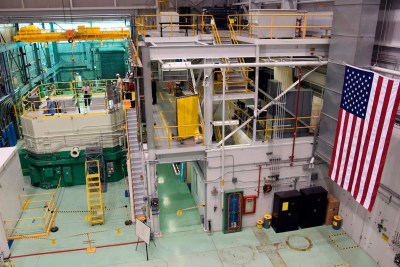The Energy Department has announced it is putting solar panels on the roof of the Pentagon for environmental reasons. No study has been done on the feasibility of this venture. No one has figured out the actual capacity needed, the percentage of power it could generate, whether the Pentagon’s building can support such an installation or how disruptive installing a solar system could be to Pentagon operations, or even how long it would take. Furthermore, nothing has been done to figure out whether a solar power system will undermine the building’s electronic security.
The other big question is where will the solar system for the Pentagon come from? Will the panels be Chinese? What about the batteries? The switching system? If Chinese, could they bug the system?
Eight out of ten solar panels installed in the United States come from China. Even if the Pentagon buys American-made panels, the metallurgical grade silicon and polysilicon needed for solar panels mostly comes from China.
In addition, if the Pentagon is really going to rely for its operation on solar energy it will need massive batteries. The batteries will be based on lithium, and China is the world’s second-largest producer. When it comes to the actual batteries, the Solarquotes blog says this: “Six of the world’s ten largest lithium-ion battery companies are in China. They produced a whopping 79 percent of all lithium-ion batteries that entered the global market in 2021 and are projected to remain the leading country in lithium-ion battery manufacturing in 2025.”
Even if the battery packs are American, the individual batteries inside them probably come from Asia, most likely China.
The Pentagon is supposed to follow the Buy America Act. Usually, that is interpreted to mean that domestically sourced portions of the acquisition must add up to more than half the total cost. Vendors, however, are allowed to count installation costs in figuring the percent of US content.
Moreover, Buy America requirements are often waived. That has been necessary for the past three decades since Chinese-made computers, laptops, modems, and other electronics are used regularly even in strategic nuclear submarines. This is done by using “waivers” that are in the Act and in the Act’s regulations. A key provision allows waivers: “The provisions of the act may be waived if the head of the procuring agency determines the act to be inconsistent with the public interest or the cost of acquiring the domestic product is unreasonable.”
Neither the Department of Energy, which is providing the initial funding, nor the Defense Department is likely to look too hard if the stuff is full of Chinese content.
If the Pentagon gets a solar system, one hopes that the storage batteries are installed in a building separate from the Pentagon – in the same way that the Pentagons independent power plant is in a separate building.
While the Energy Department says it is paying for the solar panels, it’s likely that the installation cost and new buildings plus the special wiring and switching systems will have to come out of the Pentagon’s budget.
No one can say what the real price of the project will be, but it is likely to be many hundreds of millions of dollars
The new building should be well heated because lithium batteries don’t like cold weather. They also sometimes catch fire, and lithium fires are hard to put out – usually the entire car, truck or bus has to be shrouded in a special fire suppression blanket and the wreckage still burns until all the lithium fuel is consumed.

The Pentagon will have to invest in a fire protection system, if that is possible for such a large installation. If there is a fire and the toxic smoke from it envelops the Pentagon, personnel will have to be evacuated.
Putting an unsafe and toxic system near the Pentagon, or even inside it, means vital capabilities, including national command centers will have to cease operations.
The Pentagon’s roof is not well suited for solar panels because it is not completely flat. Nor has it been designed to hold extra weight. It also has special antennas and sensors, many of them (if not all) classified. How these can work against heat-absorbing solar panels is unknown. There is, likewise, no information on how many solar panels would be needed to be useful or what percentage of electricity they could supply.
Adding a solar power system requires new security measures, as electrical systems are big antennas that need to be shielded and isolated to protect them from spying. This is a huge challenge with a building swathed in solar panels, with miles of wiring that could be a major vulnerability. Since parts of the system are likely to be from China, the risk is multiplied.

There is a promising alternative. The Pentagon has been working on “micronuclear reactors” for power generation for US military bases, essentially making them independent of local power sources and not needing diesel-powered generators to produce electricity. This solution does not pollute the air because it is not fossil fuel-based.
Because these reactors are small, they are far less vulnerable than solar or wind systems and far more efficient. If the Pentagon actually needs a standby system (which is open to question as it already has a power plant), a micronuclear reactor would be a far better, less disruptive and more efficient solution. It would make an excellent backup system, in case one is really needed.
The Biden administration has let its ideology run away from its common sense. Congress should stop any funding for a solar panel project for the Pentagon.
Stephen Bryen, who served as staff director of the Near East Subcommittee of the
US Senate Foreign Relations Committee and as a deputy undersecretary of defense
for policy, currently is a senior fellow at the Center for Security Policy and the Yorktown Institute.
This article was originally published on his Weapons and Security Substack.

